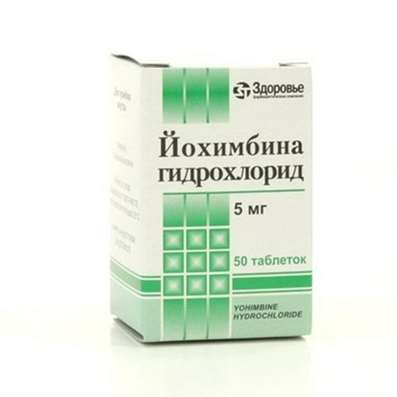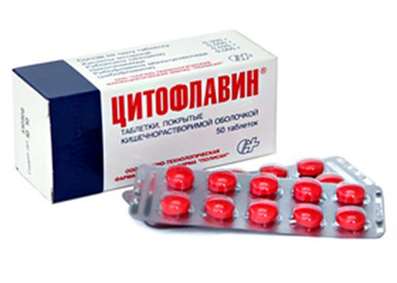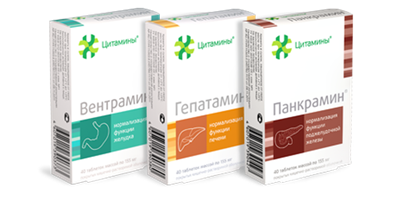Instruction for use: Aminophenylbutyric acid
I want this, give me price
The Latin name of the substance Aminophenylbutyric acid
Acidum aminophenylbutyricum (genus. Acidi aminophenylbutyrici)
Chemical name
Gamma-Amino-beta-phenylbutyric acid hydrochloride
Gross Formula
C10H14ClNO2
Pharmacological groups:
Neutron
Anxiolytics
The nosological classification (ICD-10)
F10.3 Abstinence: Alcohol withdrawal syndrome; Abstinence syndrome; Abstinence syndrome with alcoholism; Abstinence; Alcohol abstinence; Alcohol withdrawal status; Alcohol withdrawal syndrome; Postabstinctive disorder; Post-abstinence condition; Hangover syndrome; Abstinence syndrome; Alcohol abstinence syndrome; Alcohol withdrawal syndrome; Abstinence condition
F40.9 Phobic anxiety disorder, unspecified:Obsessive fear; Anxiety neurosis; Neurosis of anxiety; Acute anxiety disorder; Syndrome of paroxysmal fear; State of fear; Phobias; Phobic disorders; Feeling of fear
F41.2 Mixed anxiety and depressive disorder: Depression with anxiety-depressive components; Mixed anxiety-depressive conditions; Anxiety Depression; Anxious and depressing mood; Anxiety-depressive state; Anxious-depressive conditions; Anxiety-depressive syndrome; Anxious-Neurotic Conditions
F41.9 Anxiety disorder, unspecified: Neurotic disorders with anxiety syndrome; Severe anxiety; Neuro-like symptomatology; Neuro-like disorders; Neuro-like conditions; Neuroses with anxiety symptoms; Neuroses with a sense of anxiety; Acute situational and stress anxiety; Acute attack of anxiety; Severe Anxiety; Situational Anxiety Disorder; State of anxiety; Anxious and delusional component; Alarming state; Anxiety; Anxiety Disorders; Anxiety syndrome; Sense of anxiety; Alarm conditions; Chronic neurotic anxiety; Susto; Psychopathy with a predominance of anxiety and anxiety; Anxiety disorders in neurotic and neurosis-like states; Anxious neuroses; Anxious and delusional state; Acute situational stress alarm; Depressed mood with elements of anxiety
F42.0 Predominantly obsessive thoughts or reflections: Obsession neurosis; Obsessive-compulsive disorder; Obsessive thoughts and actions; Obsession state; Mental Chewing Gum; Obsessive thoughts; Obsessive experiences; Obsessive fears
F48 Other neurotic disorders: Neurosis; Neurological diseases; Neurotic disorders; Neurotic condition; Psychoneurosis; Anxious-Neurotic Conditions; Chronic neurotic disorders; Emotional reactive disorders
F48.9 Neurotic disorder, unspecified: Neurosis; Secondary neurotic symptom; Other neurotic conditions; Neurosis with increased irritability; Neuroses; Neuroses of all kinds; Neuroses with retardation; Neuroses of the heart; Neurotic disorders in alcoholism; Neurotic disorders with retardation; Neurotic disorders with anxiety syndrome; Neurotic reactions; Neurotic symptoms with alcoholism; Neurotic states; Neurotic syndrome; Neurotic disorder; Attack of neurological dysfunction; School neurosis; Emotional Stress
F60.2 Dissocial personality disorder: Antisocial personality; Psychopathic personality; Psychopathy; Psychopathy of an excitable type; Psychopathy and psychopathic conditions; Psychopathy of a hysterical type; Psychopathy with a predominance of anxiety and anxiety; Braking Personality
F95 Teaki: Teak child; Children's teak; Nerve Teacks in Children; Nervous teack; Teak
F98.0 Enuresis of inorganic nature: Urinary incontinence; Incontinence of non-hormonal etiology; Incontinence of inorganic etiology; Functional enuresis in children; Children's enuresis
F98.5 Stammering [Stammering]: Stammering and other speech defects in children; Logoneurosis; The clonic form of stuttering; Stuttering
G47.0 Disorders of falling asleep and maintaining sleep [insomnia]: Insomnia; Insomnia, especially difficulty falling asleep; desynchronosis; Prolonged sleep disturbance; Difficulty falling asleep; Short-term and transient insomnia; Short-term and chronic sleep disorders; Short or shallow sleep; Violation of sleep; Disturbed sleep, especially in the phase of falling asleep; Infringements sleep; sleep disturbances; Neurotic sleep disturbance; Shallow superficial sleep; shallow sleep; Poor quality of sleep; Night awakening; sleep Pathology; Postsomnic violation; transient insomnia; Trouble falling asleep; Early awakening; Early morning awakening; Early awakening; sleep disorder; somnipathy; persistent insomnia; difficult to fall asleep; difficulty falling asleep; Difficulty falling asleep in children; persistent insomnia; Worsening sleep; Chronic insomnia; Frequent night and / or early morning awakening; Frequent nocturnal awakening and a sense of the depth of the non-sleep; Night waking
H81.0 Meniere's disease: Meniere's syndrome/ disease; Meniere's disease; Meniere's syndrome; Labyrinth dropsy; endolymphatic hydrops
H81.9 Unspecified Violation of vestibular function: Labyrinth, vestibular disorders; Labyrinth disorders; vestibular nystagmus; kohleovestibulyarny disorder; Kohleovestibulyarny syndrome vascular origin; Violation of the microcirculation in the maze; Ischemic disorders of hearing and balance
H83.0 Labyrinthite: Otogenic labyrinthite; Labyrinthitis purulent; Dropsy of the labyrinth of the inner ear
R42 Dizziness and disturbance stability: vertigo; Dizziness; Dizziness and nausea during travel on transport; disorders of balance; vestibular disorders; disequilibrium; Ischemic disorders of hearing and balance
R45.1 Anxiety and agitation: Agitation; Anxiety; Explosive excitability; Internal stimulation; Excitability; Excitation; Excitation acute; Psychomotor agitation; Hyperexcitability; Motor excitement; Cessation of psychomotor agitation; Nervous excitement; Restlessness; Night trouble; Acute stage of schizophrenia with excitation; Acute mental agitation; Paroxysm of excitation; Overexcitation; Increased excitability; Increased nervous excitability; Increased emotional and cardiac excitability; Increased agitation; Mental arousal; Psychomotor agitation; Psychomotor agitation in psychoses; Psychomotor agitation of an epileptic nature; Psychomotor paroxysm; Psychomotor fit; Symptoms of excitation; Symptoms of psychomotor agitation; The state of agitation; A state of anxiety; Excitation status; A state of heightened concern; The state of psychomotor agitation; Conditions of anxiety; Excitation conditions; The state of excitement in somatic diseases; Excitation level; Feelings of anxiety; Emotional arousal
R53 Malfunction and fatigue: Asthenic disorders; Asthenic conditions; Asthenic phenomena; Asthenic syndrome; Asthenic disorder; Asthenic state; Asthenic phenomenon; Asthenia; Astheno-adynamic subdepressive state; Asthenovegetative symptoms; Asthenic-autonomic symptomatology; Asthenic autonomic disorder; Asthenodepressive disorder; Astheno-depressive disorder; Asthenodepressive state; Astheno-depressive state; Asthenoneurotic disorder; Astheno-neurotic state; Fast fatiguability; Flu of young workaholics; Influenza yuppie; Diabetic asthenia; Exhaustion of the nervous system; Exhaustion physical; Malaise; Nervous depletion with depression; General mental fatigue; General physical fatigue; General malaise; Pathological fatigue; Increased fatigue; Mental fatigue; Mental exhaustion; Astenovegetative Syndrome; Chronic Fatigue Syndrome; Decrease in total activity; The state of increased fatigue; Conditions of increased fatigue; Mental fatigue; Prostration; Fatigue; Fatigability; Physical fatigue; Physical and mental fatigue; Physical overwork; Functional asthenic conditions; Chronic fatigue; Chronic asthenic conditions
T75.3 Motion Slewing: Movement Disease; Disease of the air; Disease of the sea; Kinetosis; Airsickness; Seasickness; Swaying; Symptoms of motion sickness; Kinetosis; The motion sickness syndrome
Z100 * CLASS XXII Surgical practice: Abdominal surgery; adenomectomy; Amputation; Coronary angioplasty; Angioplasty of the carotid arteries; Antiseptic skin treatment for wounds; Antiseptic Hand; Appendectomy; atherectomy; Balloon coronary angioplasty; Vaginal hysterectomy; The coronary bypass; Interventions in the vagina and cervix; Interventions on the bladder; Intervention in the mouth; Restoration and reconstructive surgery; Hand hygiene of medical personnel; Gynecologic surgery; Gynecological intervention; Gynecological surgery; Hypovolemic shock during operations; Disinfection of purulent wounds; Disinfection of wounds edges; Diagnostic intervention; Diagnostic procedures; Cervical Diathermocoagulation; Long-surgery; Replacing the fistula catheters; Infection in orthopedic surgery; Artificial heart valve; cystectomy; Short-term outpatient surgery; Short-term operation; Short surgical procedures; Krikotireotomiya; Blood loss during surgery; Bleeding during surgery and in the postoperative period; Kuldotsentez; laser photocoagulation; laser coagulation; retinal laser coagulation; Laparoscopy; Laparoscopy in Gynecology; CSF fistula; Small gynecological operations; Small surgical procedures; Mastectomy and subsequent plastic; mediastinotomy; Microsurgical operations on the ear; Mukogingivalnye operation; suturing; Minor surgery; neurosurgical operation; Immobilization of the eyeball in ophthalmic surgery; testectomy; pancreatectomy; Perikardektomiya; The period of rehabilitation after surgery; The period of convalescence after surgery; Percutaneous transluminal coronary angioplasty; Pleural thoracentesis; Pneumonia postoperative and posttraumatic; Preparation for surgical procedures; Preparation for surgery; Preparation of the surgeon's hands before surgery; Preparation of the colon for surgical procedures; Postoperative aspiration pneumonia in neurosurgical and thoracic surgery; Postoperative nausea; Postoperative bleeding; postoperative granuloma; postoperative shock; The early postoperative period; myocardial revascularization; Radiectomy; gastric Resection; bowel resection; uterine Resection; liver Resection; enterectomy; Resection of part of the stomach; Reocclusion of the operated vessel; Bonding tissues during surgical procedures; Removal of sutures; Condition after eye surgery; Condition after surgery; Condition after surgery in the nasal cavity; Condition after gastrectomy; Status after resection of the small intestine; Condition after tonsillectomy; Condition after removal of the duodenum; Condition after phlebectomy; Vascular surgery; Splenectomy; Sterilization of surgical instruments; Sterilization of surgical instruments; sternotomy; Dental surgery; Dental intervention in periodontal tissues; strumectomy; Tonsillectomy; Thoracic surgery; Thoracic surgery; total gastrectomy; Transdermal intravascular coronary angioplasty; Transurethral resection; Turbinektomiya; Removal of a tooth; cataract surgery; Removal of cysts; tonsillectomy; Removal of fibroids; Removing the mobile primary teeth; Removing polyps; Removing broken tooth; Removal of the uterus body; Removal of sutures; Fistula likvoroprovodyaschih ways; Frontoetmoidogaymorotomiya; Surgical infection; Surgical treatment of chronic limb ulcers; Surgery; The surgery in the anal area; The surgery on the colon; Surgical practice; The surgical procedure; Surgical interventions; Surgery on the gastrointestinal tract; Surgical procedures on the urinary tract; Surgical procedures on the urinary system; Surgical intervention of the genitourinary system; Surgical procedures on the heart; Surgical manipulation; surgery; Surgery on the veins; Surgical intervention; Vascular surgery; Surgical treatment of thrombosis; Surgery; cholecystectomy; Partial gastric resection; hysterectomy; Percutaneous transluminal coronary angioplasty; Percutaneous transluminal angioplasty; Coronary artery bypass; tooth Extirpation; Extirpation of milk teeth; pulpectomy; pulsative cardiopulmonary bypass; tooth Extraction; teeth Extraction; cataract extraction; Electrocoagulation; endourological intervention; episiotomy; Etmoidotomiya; Complications after tooth extraction
CAS Code
1078-21-3
Characteristics of the substance Aminophenylbutyric acid
White crystalline powder. Very easily soluble in water, soluble in alcohol, pH of aqueous (2.5%) solution 2.3-2.7.
By chemical structure can be considered as a phenyl derivative of GABA, and also as a derivative of phenylethylamine.
Pharmacology
The pharmacological action is anxiolytic, nootropic.
Affects GABA receptors in the central nervous system, facilitates GABAergic transmission of impulses, improves bioenergetic processes in the brain. Eliminates tension, anxiety, anxiety, fear and improves sleep; Prolongs and intensifies the effect of hypnotics and neuroleptics, narcotic analgesics. Reduces the manifestations of asthenia and vasovegetative symptoms (including headache, a feeling of heaviness in the head, insomnia, irritability, emotional lability), increases mental performance; Improves attention, memory, speed and accuracy of sensor-motor reactions. When asthenia improves well-being, increases interest and motivation of activity. It prolongs the latent period and reduces the duration and severity of nystagmus.
Absorption from the gastrointestinal tract is high, it penetrates well into all tissues and through the BBB (about 0.1% of the dose administered is found in the brain tissue, in young people and the elderly - significantly more). Metabolized mainly in the liver (80-95%) to pharmacologically inactive metabolites. About 5% is excreted in the urine unchanged. Does not cumulate.
Application of the substance Aminophenylbutyric acid
Asthenic syndrome, anxiety-neurotic states (anxiety, anxiety, fear), obsessive-compulsive disorder, insomnia and nighttime anxiety in the elderly, psychopathy, premedication before surgical interventions, otogenous labyrinthitis, vestibular disorders of infectious, vascular and traumatic origin, incl. Meniere's disease, dizziness, alcohol withdrawal syndrome (as part of complex therapy), prevention of motion sickness with kinetosis; Children - stuttering, tics, enuresis.
Contraindications
Hypersensitivity.
Restrictions on the use
Erosive-ulcerative lesions of the gastrointestinal tract, hepatic insufficiency, pregnancy, breast-feeding.
Application in pregnancy and lactation
With caution (there is insufficient clinical experience). In experimental studies, no mutagenic, teratogenic and embryotoxic effects were detected.
The FDA action category for fetus is not defined.
Side effects of the substance Aminophenylbutyric acid
Drowsiness, nausea, headache (with the first techniques); Increased irritability, agitation, anxiety, dizziness, allergic reactions.
Interaction
Strengthens and lengthens the effect of hypnotics, antiparkinsonian and antiepileptic drugs, neuroleptics, narcotic analgesics.
Overdose
Symptoms: severe drowsiness, nausea, vomiting, fatty degeneration of the liver (taking more than 7 g), eosinophilia, lowering blood pressure, impaired renal function.
Treatment: gastric lavage, the appointment of activated charcoal, symptomatic therapy.
Routes of administration
Inside.
Precautions for the substance Aminophenylbutyric acid
With prolonged use, it is necessary to monitor the parameters of liver function and peripheral blood.
With caution apply during work drivers of vehicles and people whose profession is associated with increased concentration of attention.
Special instructions
It is poorly effective after the onset of severe motion sickness (vomiting, dizziness, etc.).

 Cart
Cart





